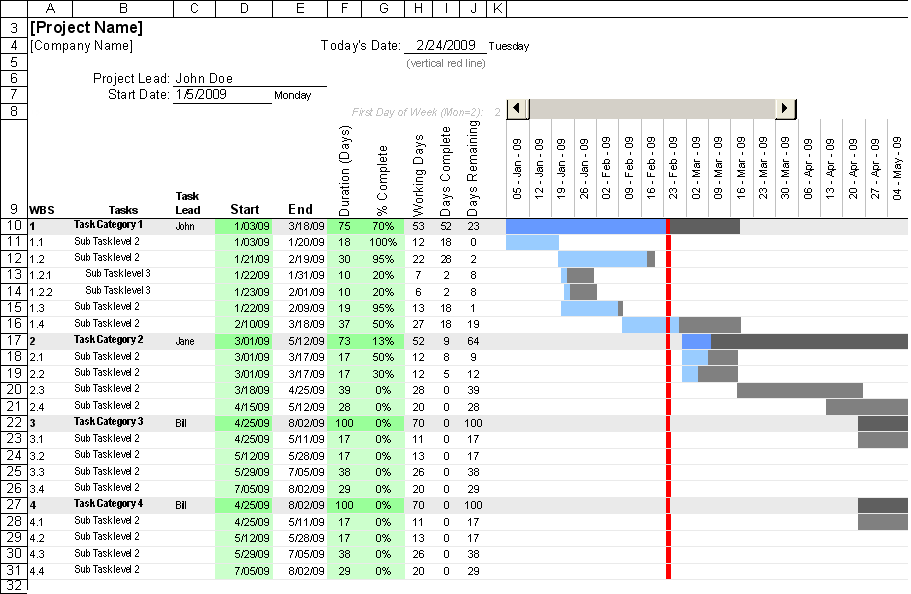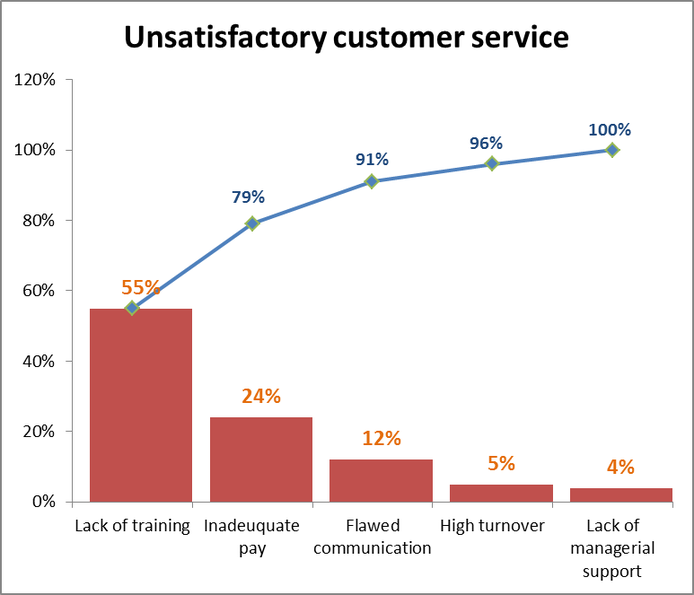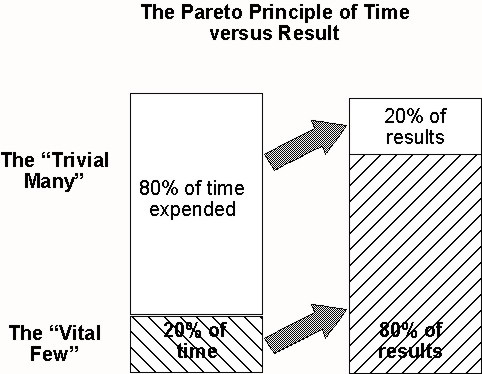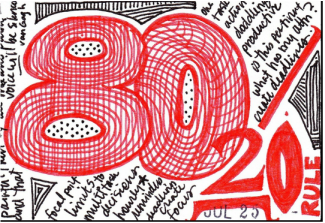Effective Project Management Gantt Chart & Pareto Diagram
Project management can be a difficult task, depending on the project you're involved with. Project management involves 5 different steps: initiating, planning, executing, controlling, and closing the work when the goals are met.
Doing a successful project management is different from running a successful business. Due to the short period of time involved with any project management, the management strategies, and technical skills are different from the ones required to manage a business, which is usually more stable, permanent and repetitive.
Project management has a lot of challenges, and the first one starts by defining the project goals and constraints. This is the first thing you have to create so you can then establish how the project is going to take place.
There are many constraints when you're managing a project (that you usually don't have when you're running a business). When someone talks to you to see if you're available to be a project manager, the first thing you think about is time and budget. But there are other primary constraints such as the quality and the scope of the project.
So, how can you effectively be a project manager?
There are some tools you can use that will help get your work done, in time, and within the budget.
Doing a successful project management is different from running a successful business. Due to the short period of time involved with any project management, the management strategies, and technical skills are different from the ones required to manage a business, which is usually more stable, permanent and repetitive.
Project management has a lot of challenges, and the first one starts by defining the project goals and constraints. This is the first thing you have to create so you can then establish how the project is going to take place.
There are many constraints when you're managing a project (that you usually don't have when you're running a business). When someone talks to you to see if you're available to be a project manager, the first thing you think about is time and budget. But there are other primary constraints such as the quality and the scope of the project.
So, how can you effectively be a project manager?
There are some tools you can use that will help get your work done, in time, and within the budget.
Gantt Charts
If your project is complex, you need to turn to project management Gantt charts. They will help you with both planning and scheduling. They show all the tasks that need to be completed in a project, their order, and they're presented against a time scale. This visual representation of the project shows you, at a glance, what has been done, what needs to be done, if you're running late in any task, etc.
So, to make sure you have your project management Gantt chart, you need to be very thorough with all people who are working on the project. You'll need to know who's responsible for each task, how long will each task take, what problems may arise when they are working on the project, etc. Your job is to know exactly what will be done, by who, how long they need to get it done and try to predict any problem that may arise.
So, to make sure you have your project management Gantt chart, you need to be very thorough with all people who are working on the project. You'll need to know who's responsible for each task, how long will each task take, what problems may arise when they are working on the project, etc. Your job is to know exactly what will be done, by who, how long they need to get it done and try to predict any problem that may arise.
Pareto Diagram
The Pareto diagram is a simple tool that can also help you with project management. You can use it to:
- Display the inputs that matter most in a visual format;
- Help the team to focus on the most important inputs.
There are other tools that can help you with project management but these are the most useful. You can not only have a detailed step-by-step plan to follow, where you include every single task, everyone who's working on the project, and the time needed for each task, by using the Gantt charts. As you can also have another visual format - using a Pareto diagram - that will show the most important tasks your team needs to work on.
- Display the inputs that matter most in a visual format;
- Help the team to focus on the most important inputs.
There are other tools that can help you with project management but these are the most useful. You can not only have a detailed step-by-step plan to follow, where you include every single task, everyone who's working on the project, and the time needed for each task, by using the Gantt charts. As you can also have another visual format - using a Pareto diagram - that will show the most important tasks your team needs to work on.






